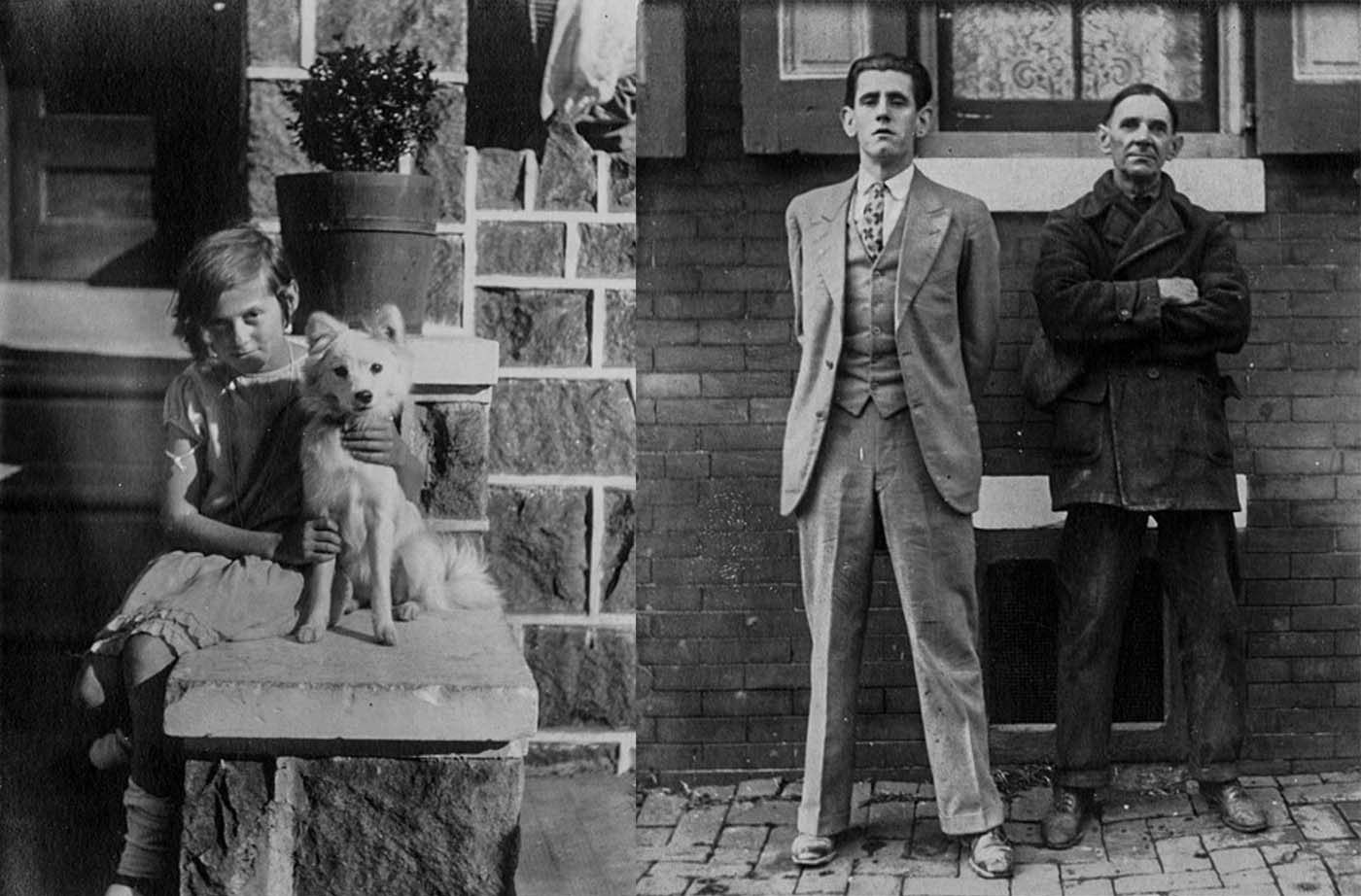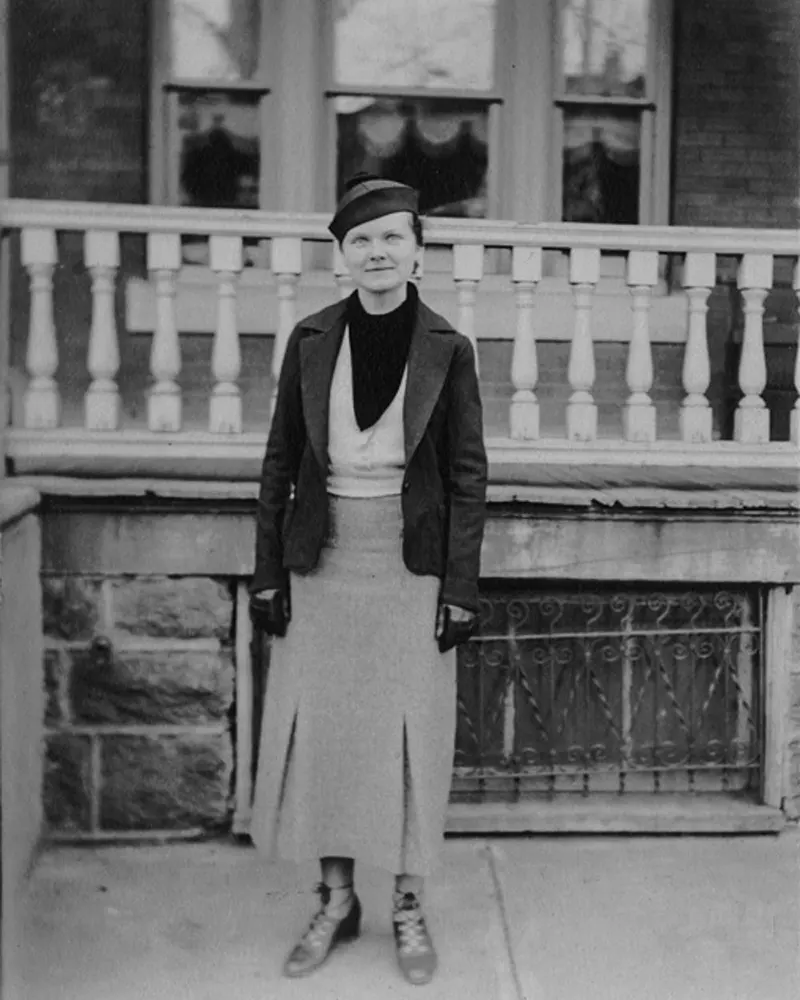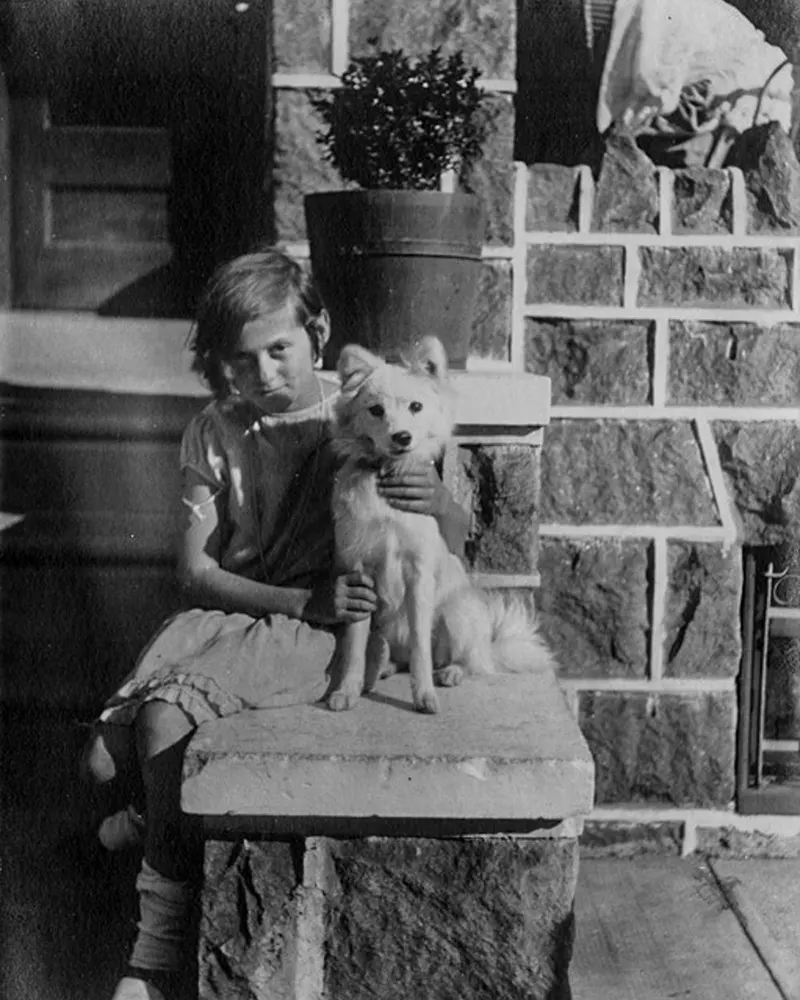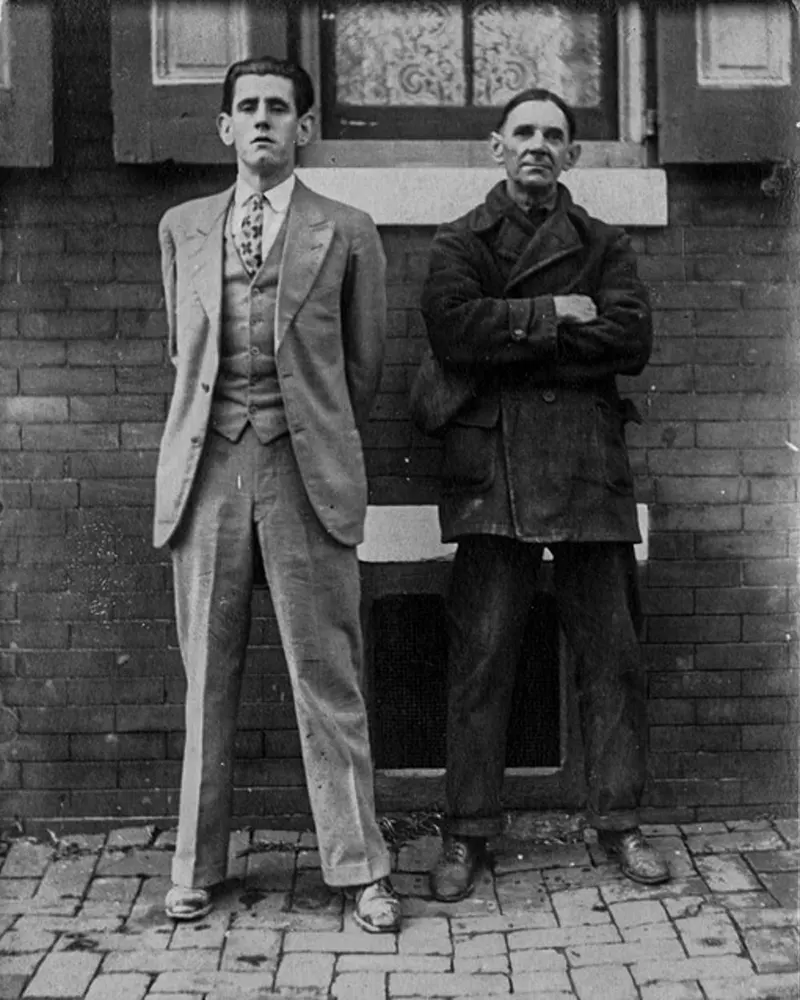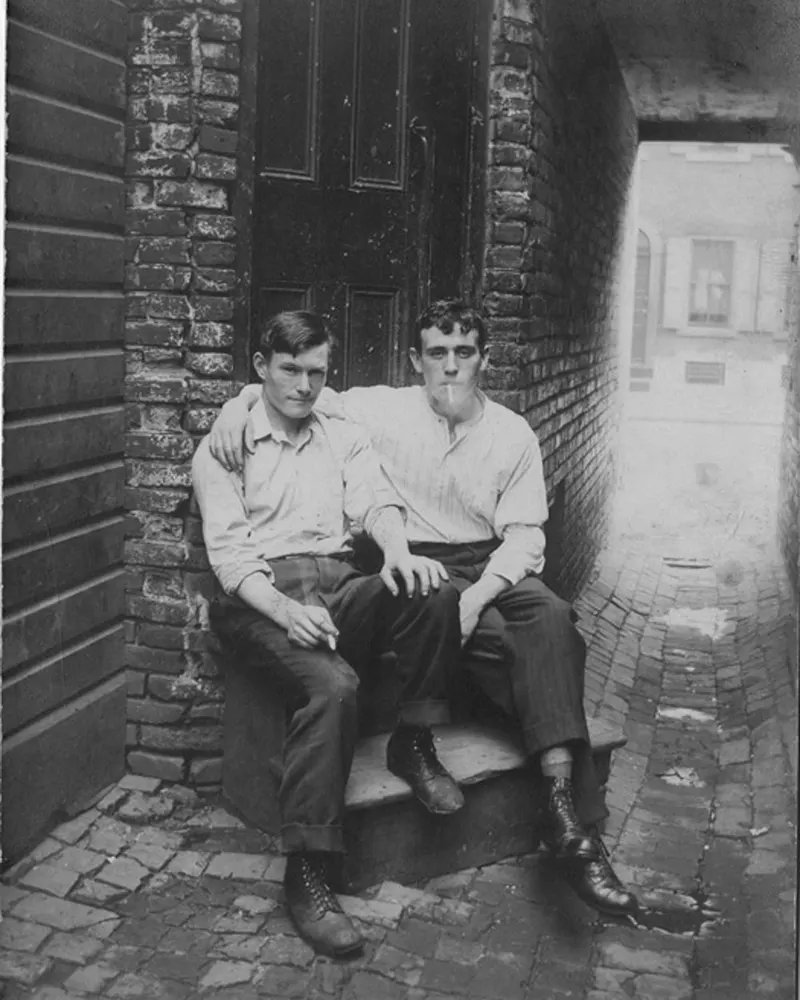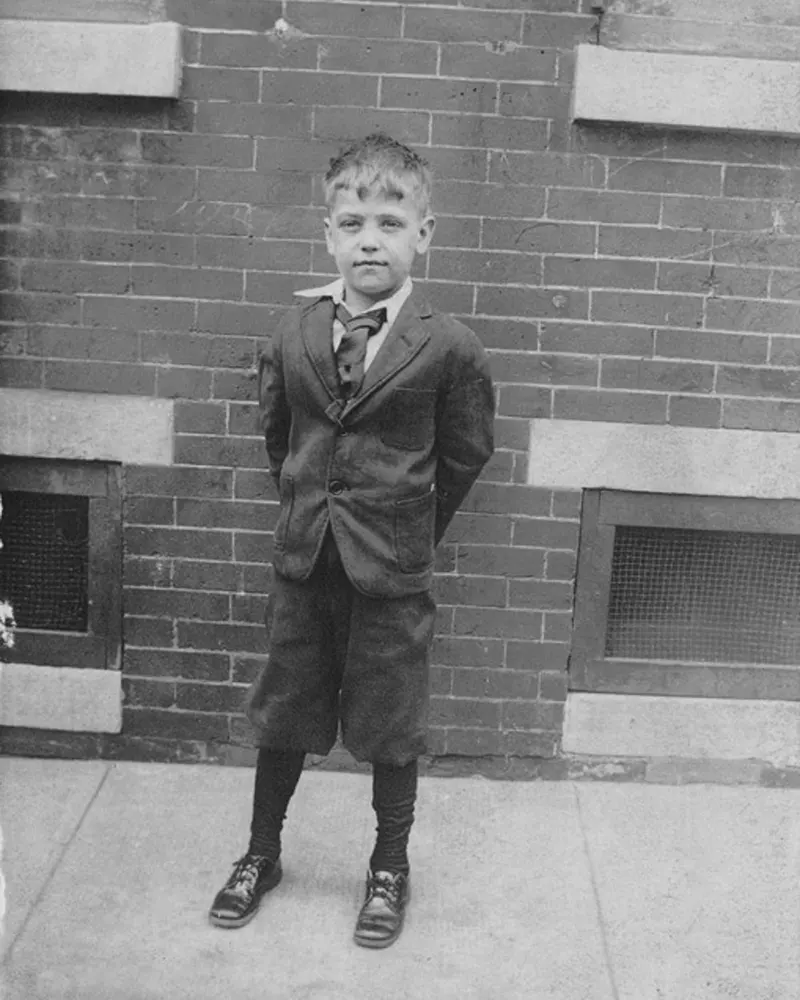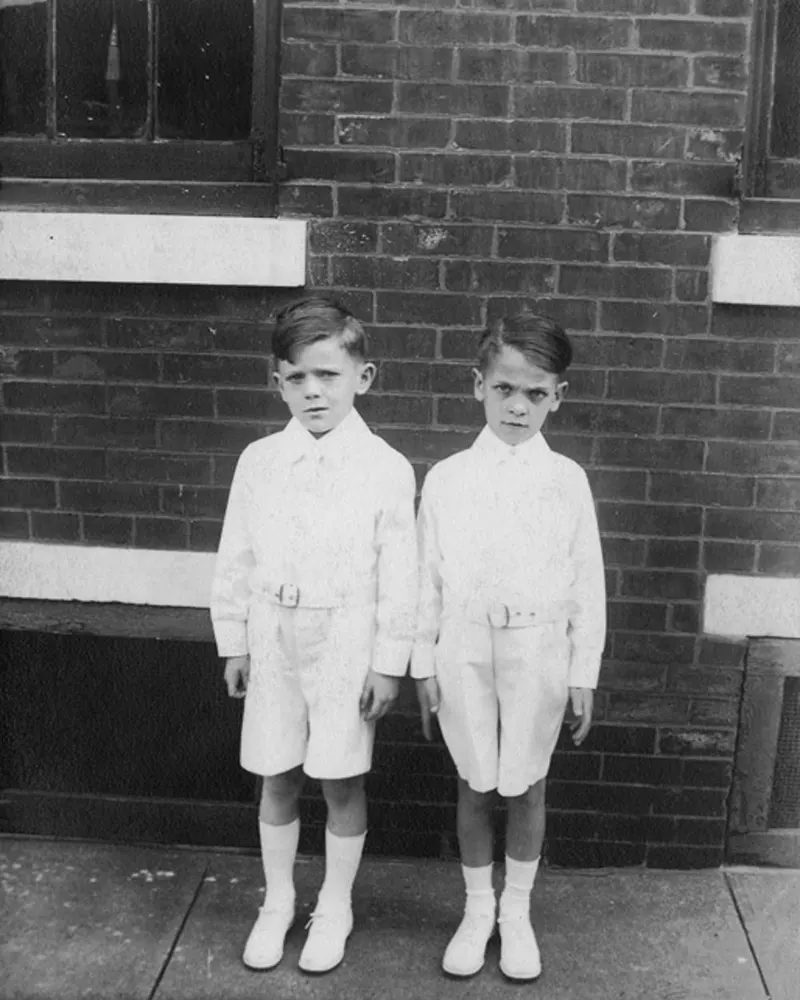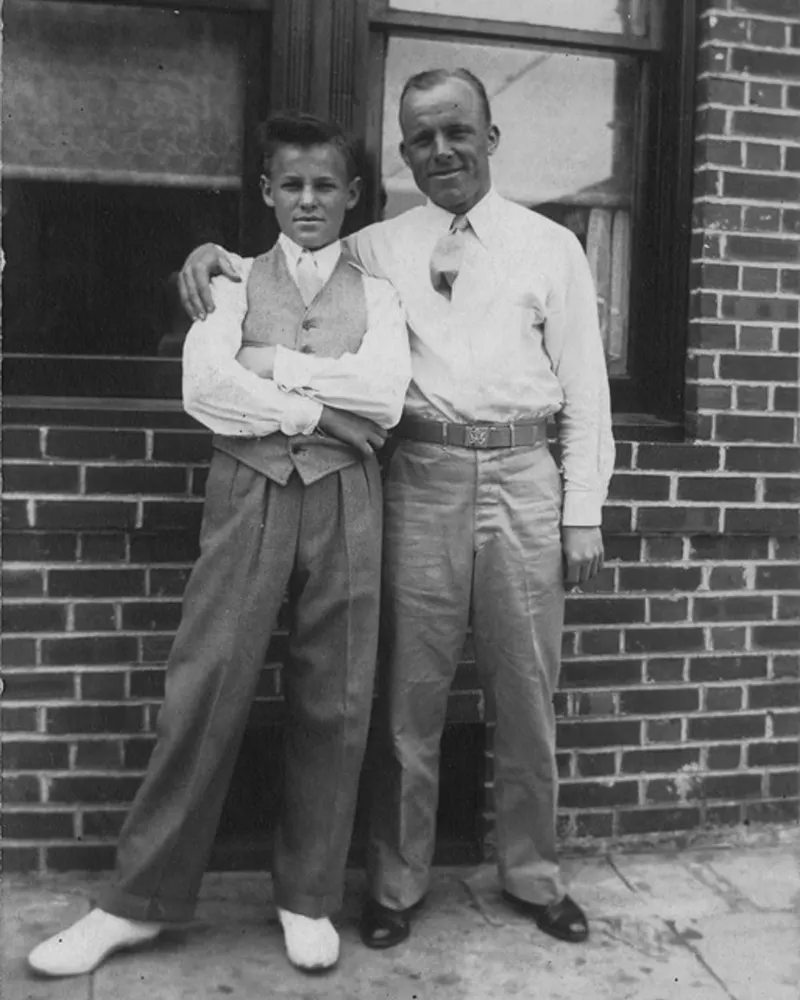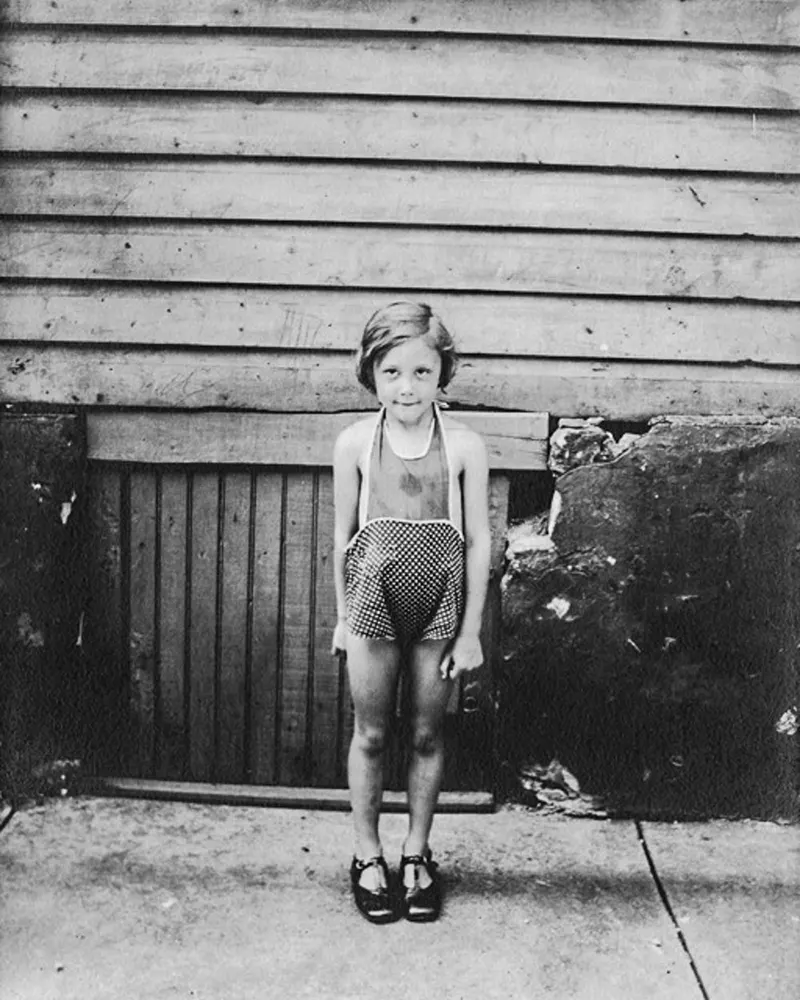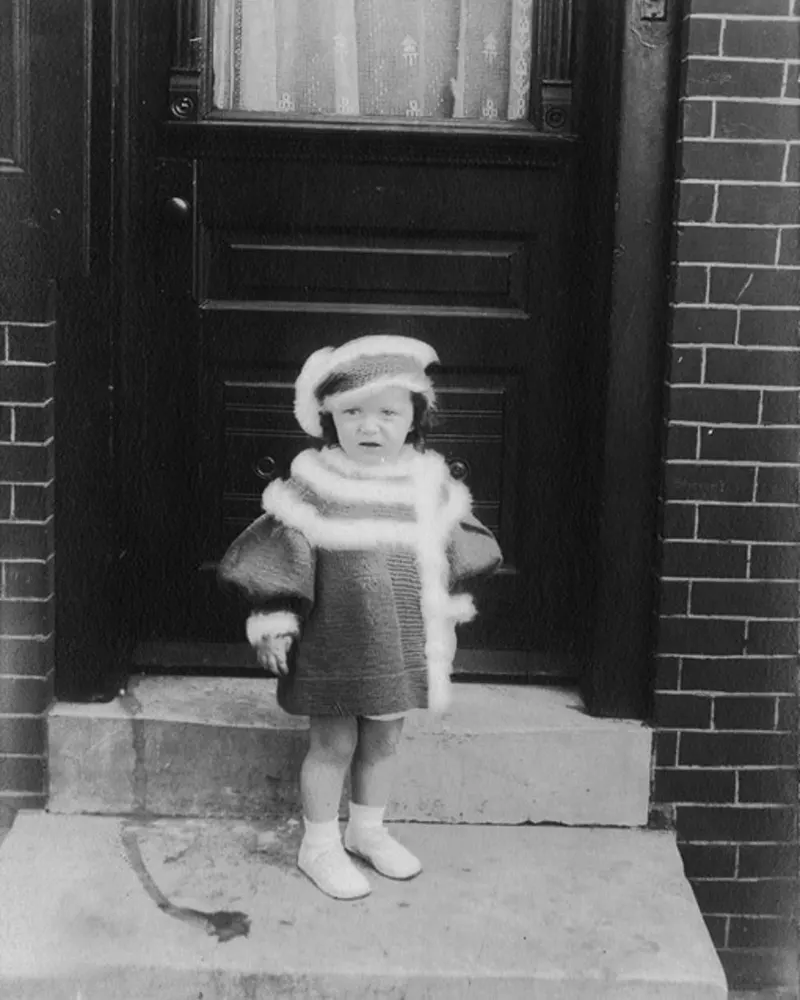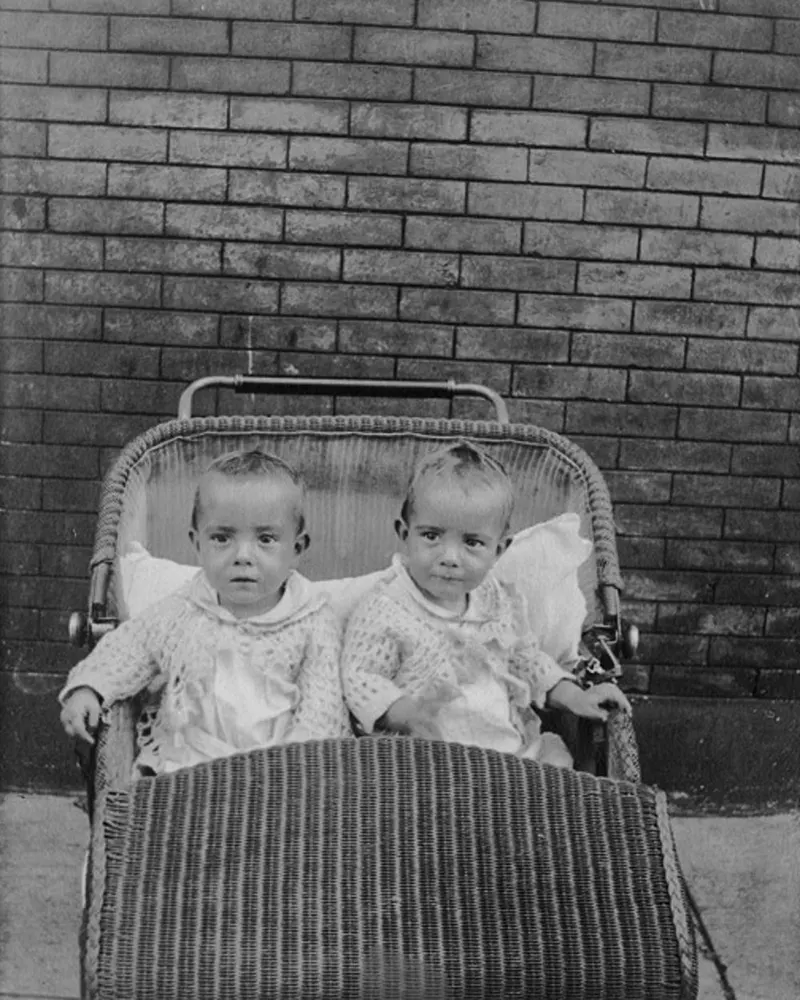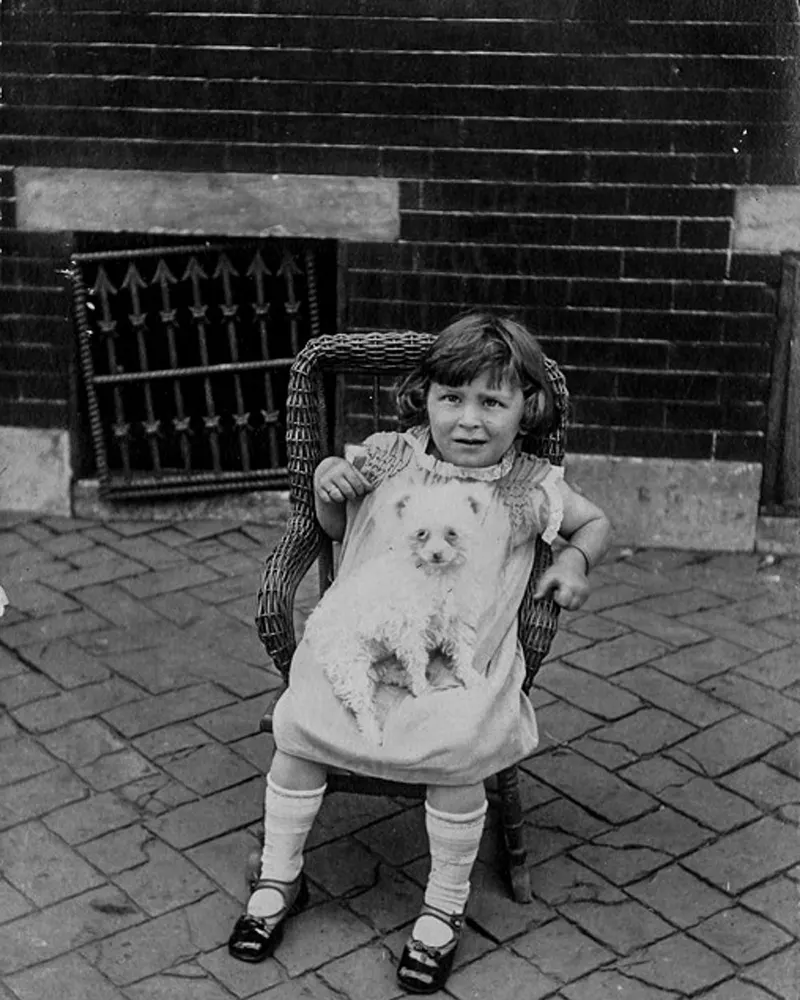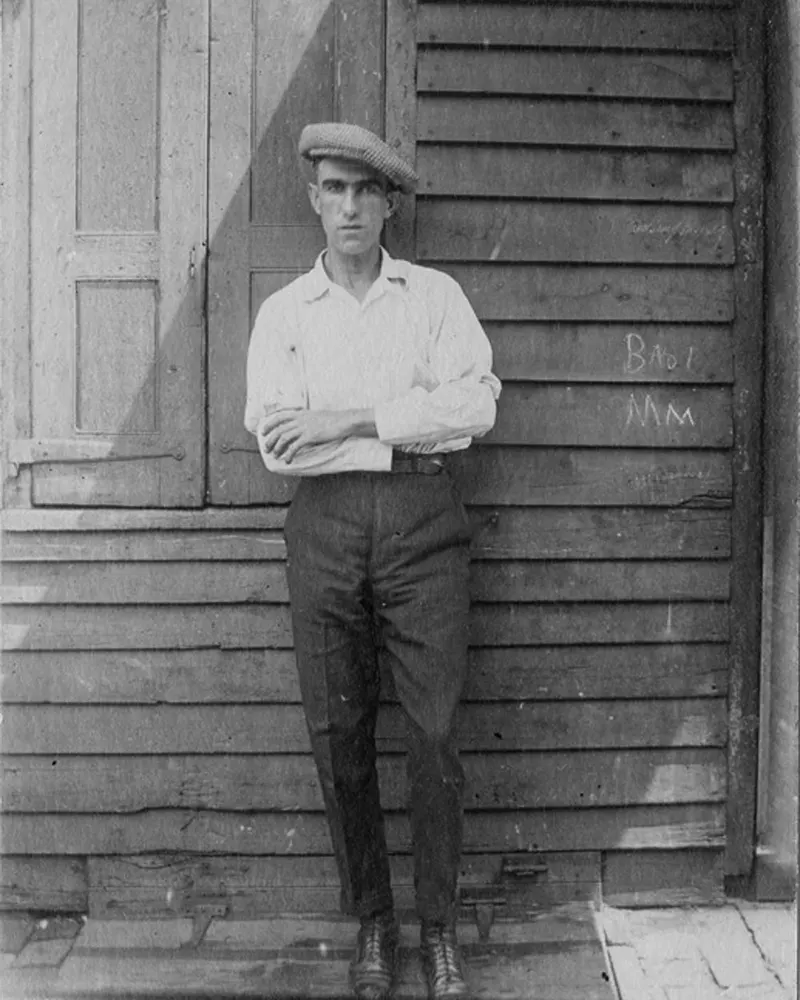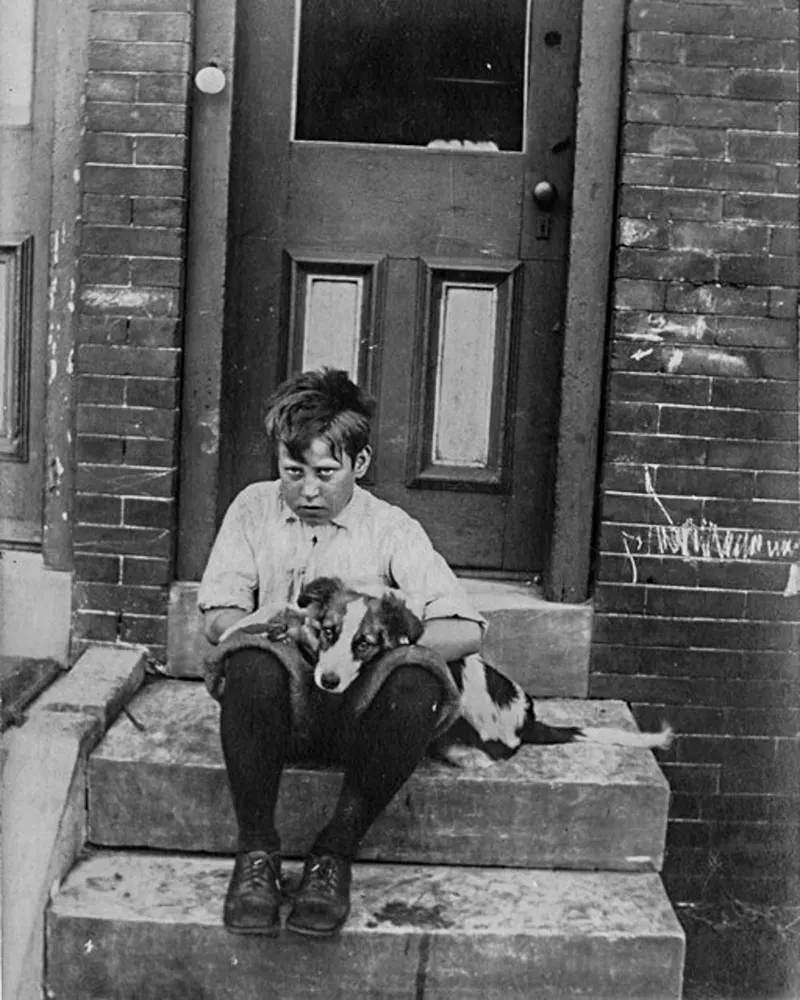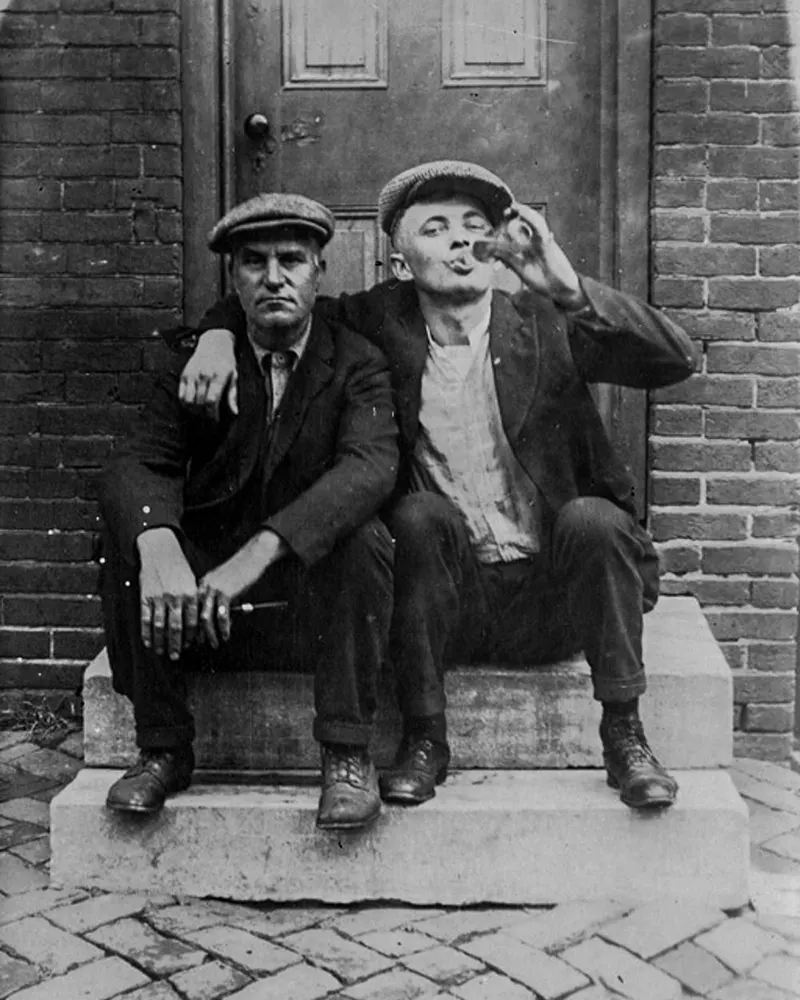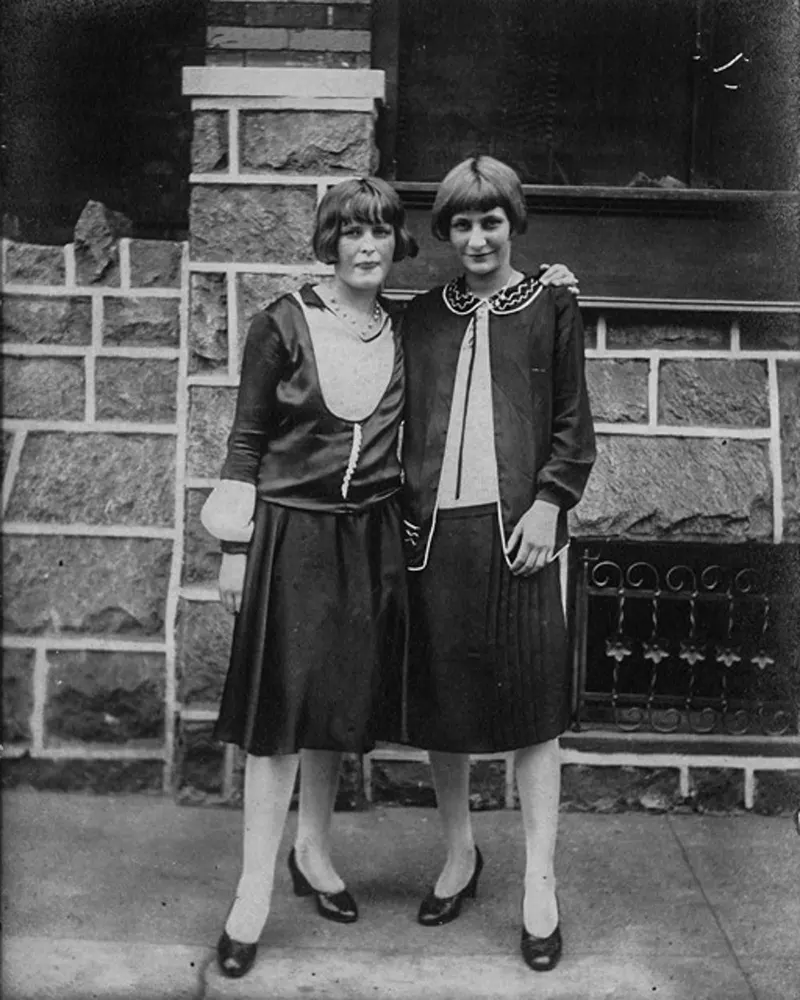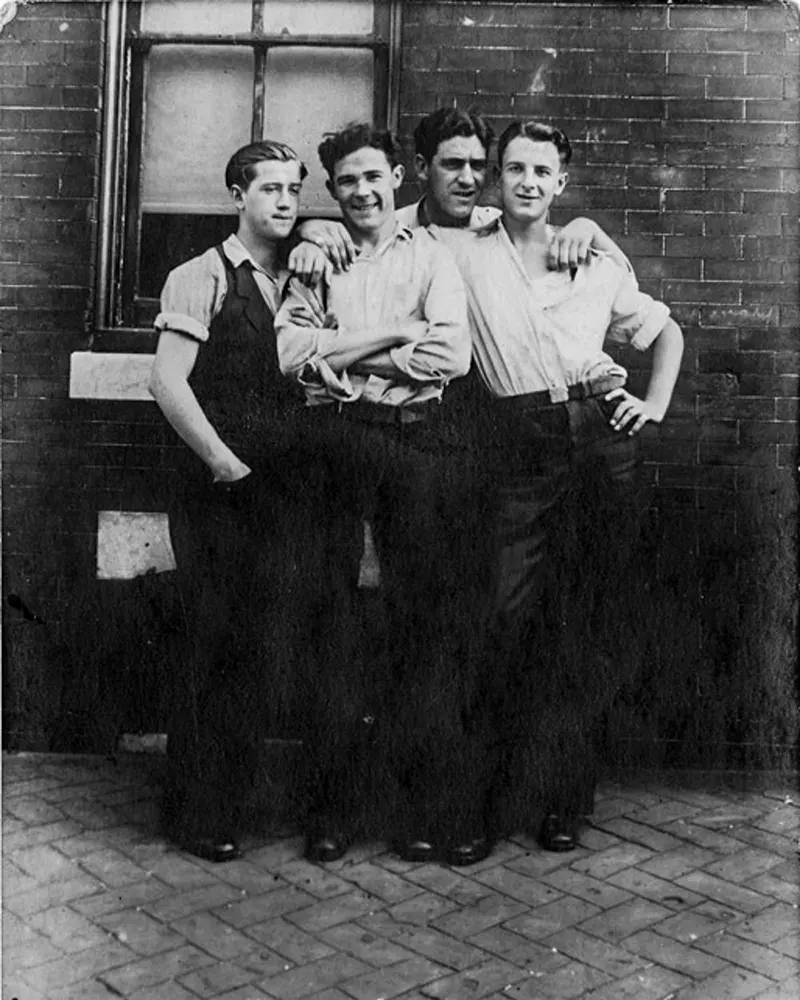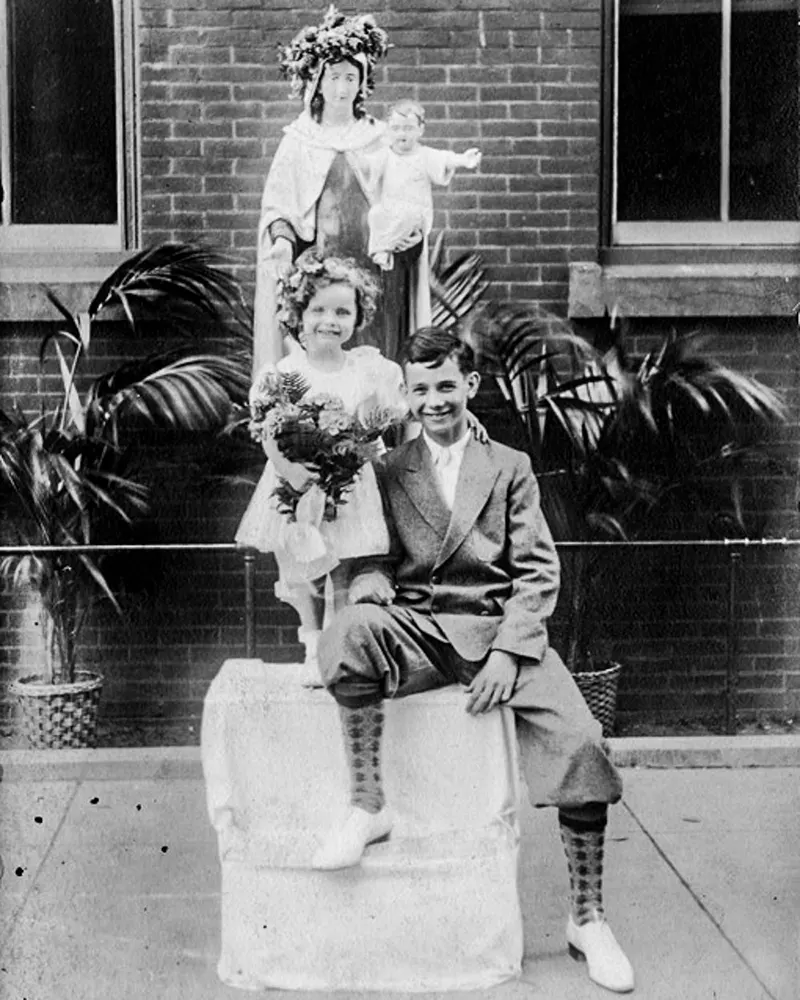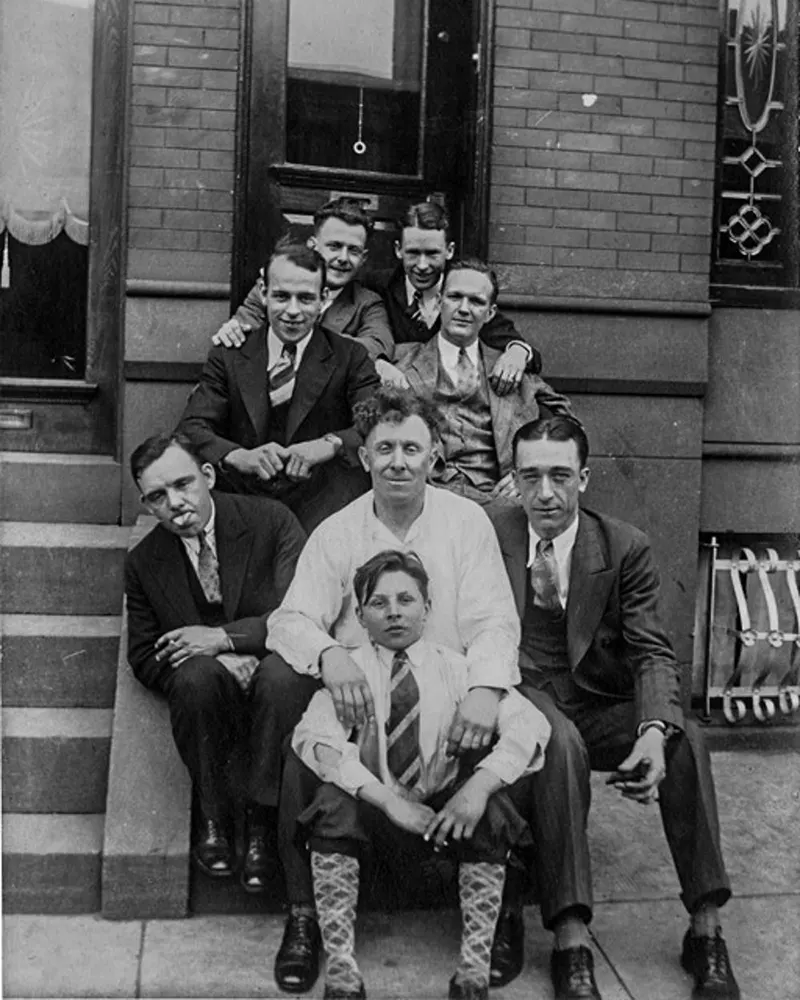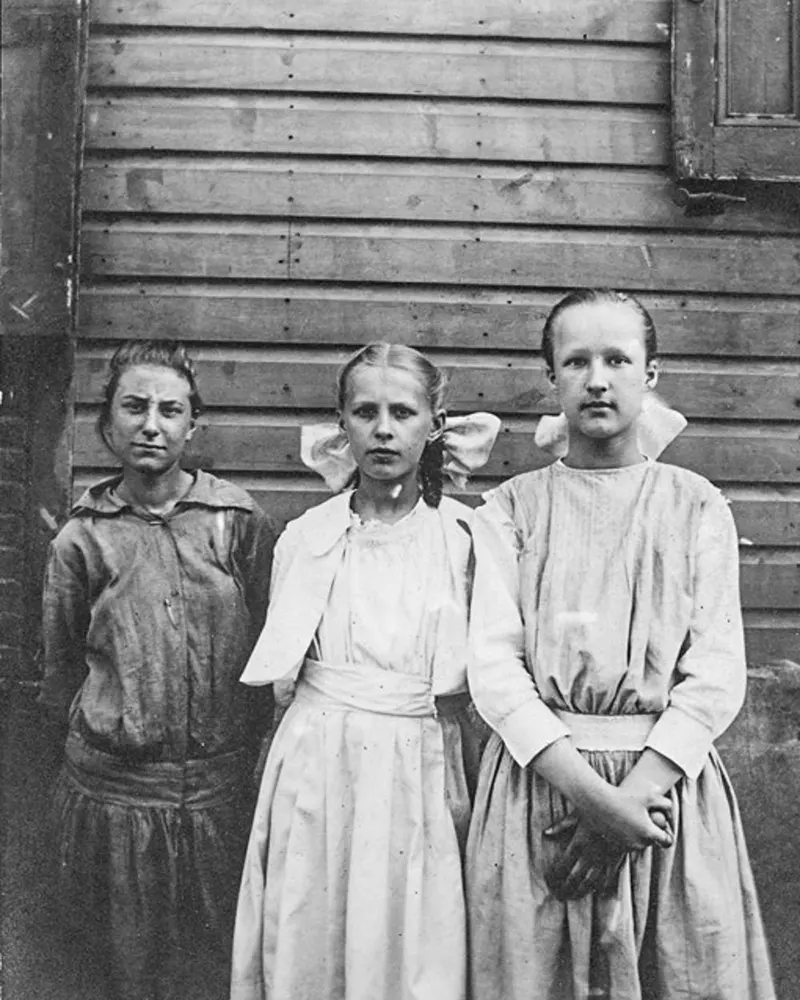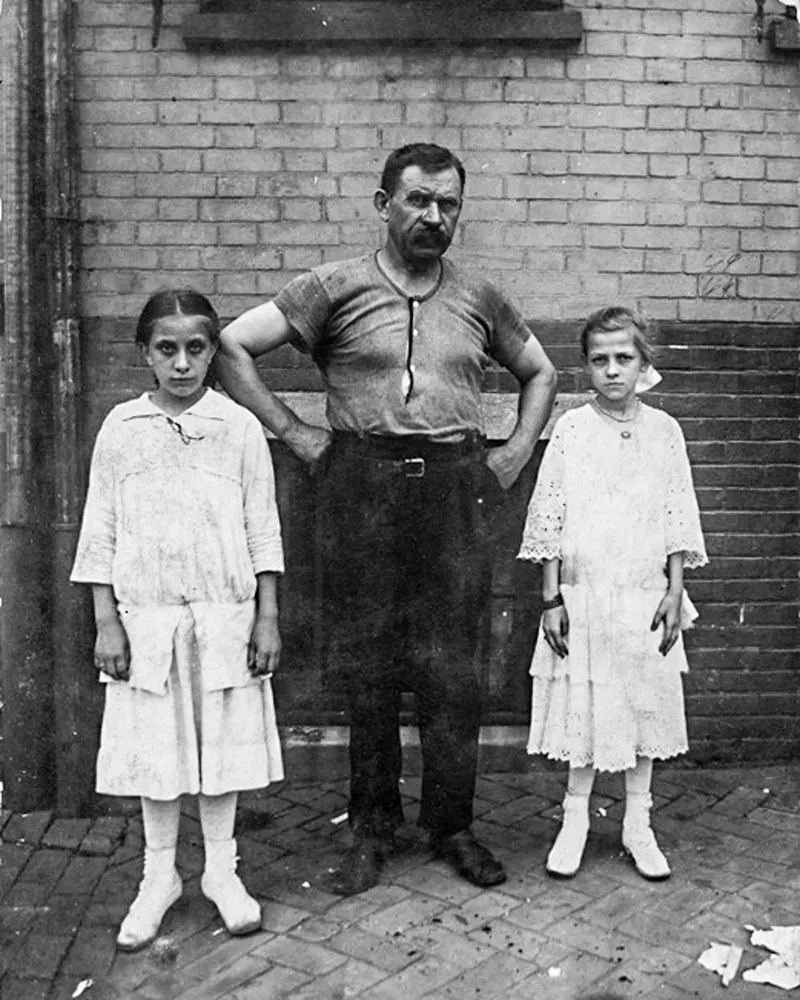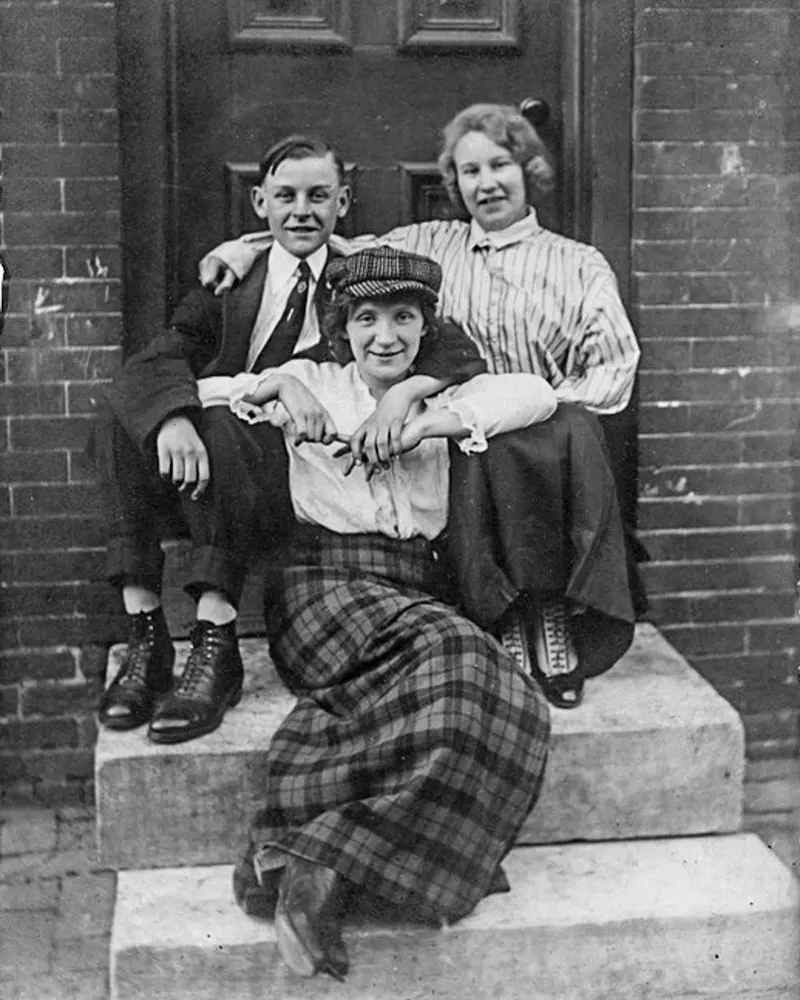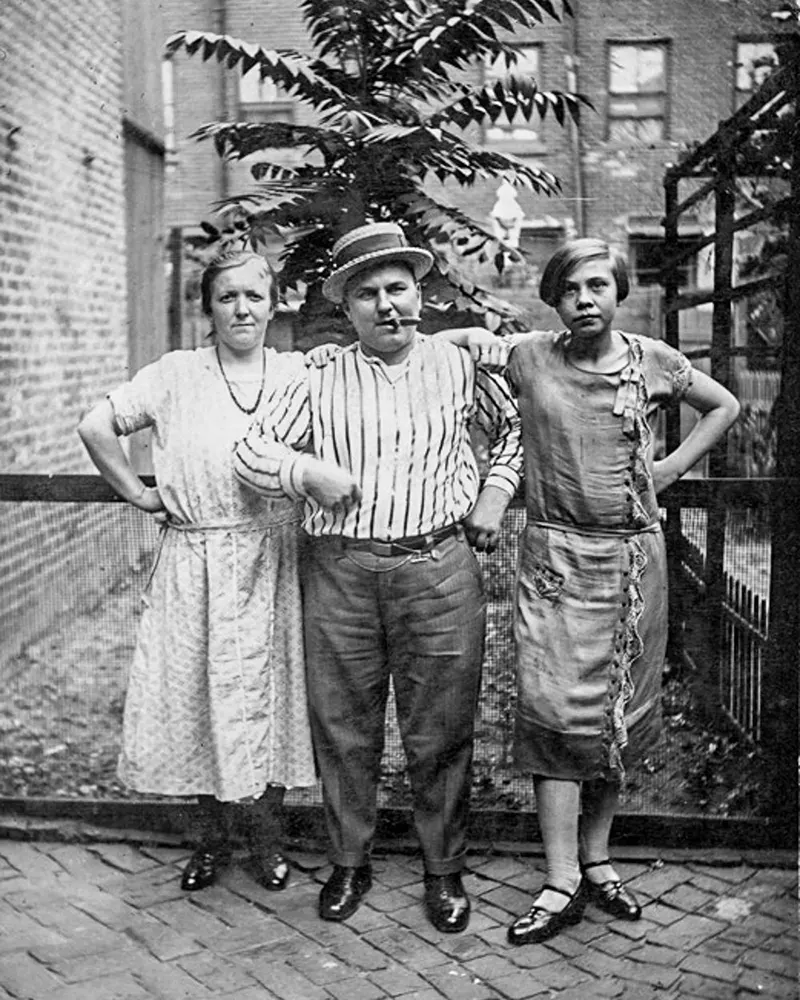Despite his day job as a bookkeeper, Keith managed to find time to pursue his interest in photography. He traveled from his home in the Kensington area to parts of South Philadelphia to photograph residents in front of their homes. He even experimented with night photography from the roof of the family house, within which he maintained his darkroom. Never asking for payment for his pictures, often he gifted them to the people he photographed. Keith’s informal archive is more than a collection of individuals: it is an intimate portrait of a neighborhood in the 1920s. Working in a documentary style reminiscent of Lewis Hine, but without Hine’s social activism, Keith posed members of the community — usually children — on the front stoops of their urban row houses. His inexpensive camera dictated a consistent distance from the subjects, and his amateur-quality lens was responsible for the slightly unfocused distortion at the edge of the picture. Had he stood farther away, the camera’s blur would have been too great; standing closer, he would have lost all reference to the neighborhood. Like itinerant photographers of the nineteenth century who counted on the similarities of circumstance and dress to compose a picture, Keith rarely changed the major elements of his photographs. Instead, he focused on the small details that did change: the difference in a door frame or the contrasting colors of his subjects.
(Photo credit: John Frank Keith Collection / Library Company of Philadelphia / American Art si.edu). Notify me of new posts by email.
Δ Subscribe
